Category: General

GM considering re-badging Hyundai commercial EVs for US
General Motors could sell commercial electric vehicles made by Hyundai under one of its own brands in the U.S., an executive said this week.
“We are considering re-badging our commercial EVs and supplying GM,” Hyundai CFO Seung Jo Lee told Reuters and other media on an analyst call. “The deal will pave the way for our entry into the North American commercial vehicle market.”
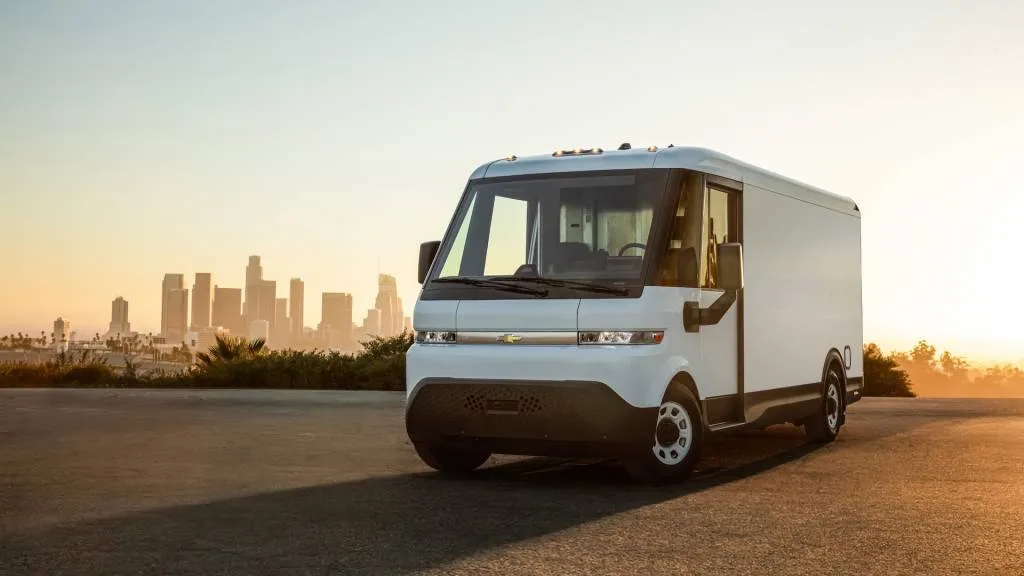
2025 Chevrolet BrightDrop 600
Hyundai signed a non-binding memorandum of understanding with GM last year aimed at laying the foundation for an EV and fuel-cell partnership. The automaker now aims to sign binding contracts with GM on cooperation in parts procurement, as well as collaboration on passenger cars and commercial vehicles, within the first quarter of this year, Reuters reports.
Hyundai sells commercial vehicles like buses and heavy-duty trucks in other markets, but hasn’t attempted to enter the U.S. market under its own banner. The automaker is bringing a small fleet of Xcient Fuel Cell Class 8 semi trucks to California for testing, though.
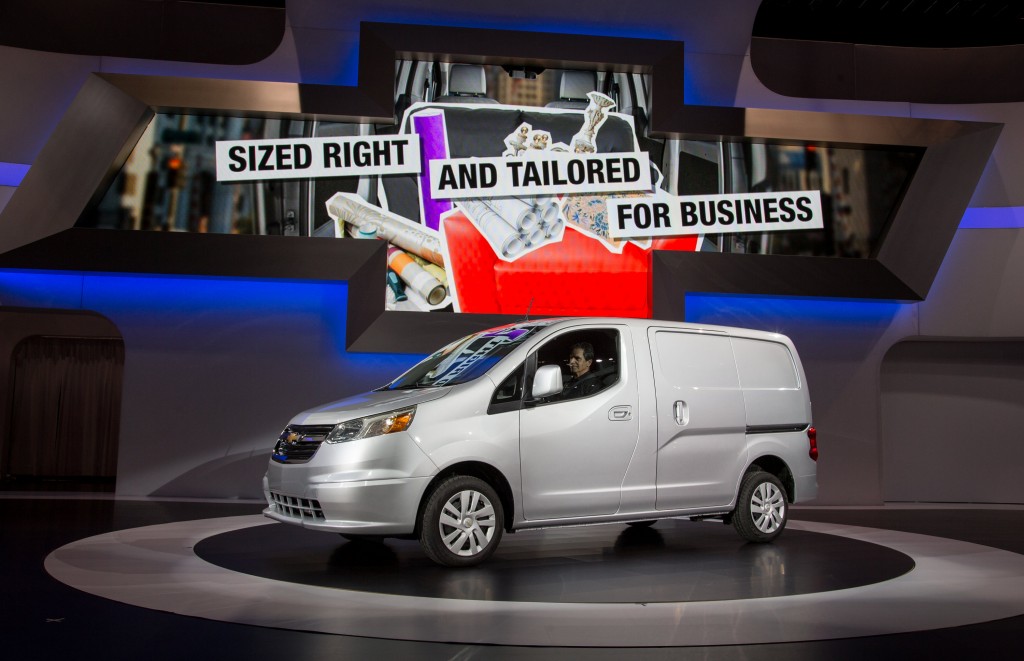
2015 Chevrolet City Express van, 2014 Chicago Auto Show
It’s unclear which Hyundai commercial EVs GM would choose to sell. The U.S. automaker already has its own electric vans, previously marketed under the BrightDrop brand, but recently folded into Chevrolet to leverage that brand’s larger dealer network. The BrightDrop vans are based on the same component set—formerly known as Ultium—used for GM’s current electric cars and trucks.
BrightDrop aside, GM hasn’t shown much interest in developing new commercial vehicles recently. It even once sold a rebadged Nissan NV200—the compact van once heralded as New York City’s “Taxi of Tomorrow”—as the Chevrolet City Express. However, neither GM nor Nissan saw fit to bring the electric version of the NV200 to the U.S.

2026 Cadillac Lyriq-V marks first electric V-Series for $79,990
- The Cadillac Lyriq-V will go into production in Q1
- Cadillac expects EPA range at 285 miles
- It’ll cost $79,990 to buy the 2026 Lyriq-V
The 2026 Cadillac Lyriq-V, revealed Thursday, marks the most powerful, quickest, and most expensive version of the Lyriq EV to date. When the Lyriq-V goes into production this spring at GM’s Spring Hill Manufacturing plant in Tennessee it will cost $79,990 including a destination charge of $1,395.
The Lyriq-V will use the standard Lyriq’s 102-kwh battery pack, but output from the dual-motor powertrain is kicked up to 615 hp and 650 lb-ft of torque. A single motor per axle will deliver all-wheel drive. Cadillac said range will check in at 285 miles.
The Lyriq-V’s 0-60 mph time of 3.3 seconds is 0.1 second quicker than the gas-guzzling supercharged-V-8-powered CT5-V Blackwing. Cadillac gave the Lyriq-V shorter final drive ratios of 11.59:1 in the front and 11.63:1 in the rear while the standard Lyriq has 9.87:1 front and 10.49:1 rear ratios.
Cadillac upgraded the braking system for V duty, with 6-piston Brembo calipers grabbing 15.3-inch front discs when it comes time to stop. The rear rotors, with sliding rear single-piston calipers that aren’t Brembo-branded, are 13.6 inches in diameter.
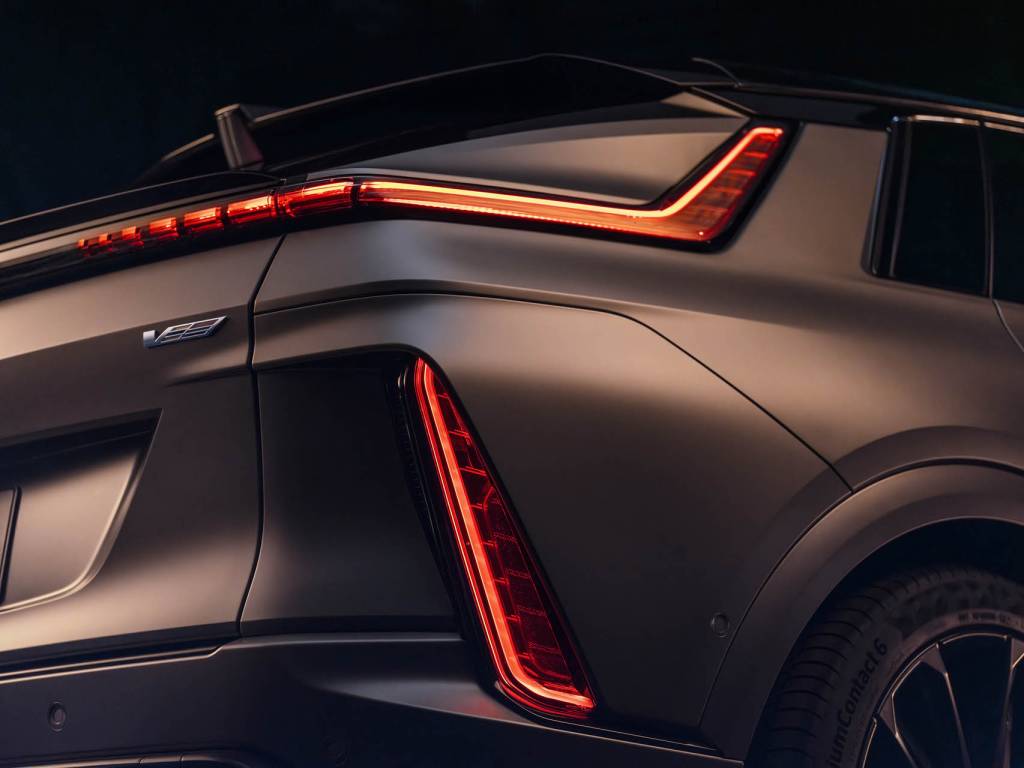
2026 Cadillac Lyriq-V
Lyriq-Vs will include a new Competitive Mode that Cadillac said lets drivers push the electric crossover to its lateral limits. A new V-Mode, which is a known fixture in the V-Series, enables drivers to modify settings to their liking. That includes steering weight and throttle sensitivity, along with damper firmness. Cadillac’s Performance Traction Management system, which enables multiple levels of stability control for track days on gas-powered V-Series models, is absent.
A stiffened structure, standard adaptive dampers that lower the ride height by 0.62 inch, and quicker 15.81:1 steering ratio (standard Lyriqs have a steering ratio of 18.44:1) should give the Lyriq-V sharper handling. Continental Performance Contact 6 summer rubber will be standard while Michelin all-season tires will be available.
The Lyriq-V is said to feature a V-specific sound. Cadillac noted it can be customized via modes, but for those that prefer it can be turned off. It’s said to deliver a “multilayer experience exclusive for the V,” Cadillac spokespeople said.
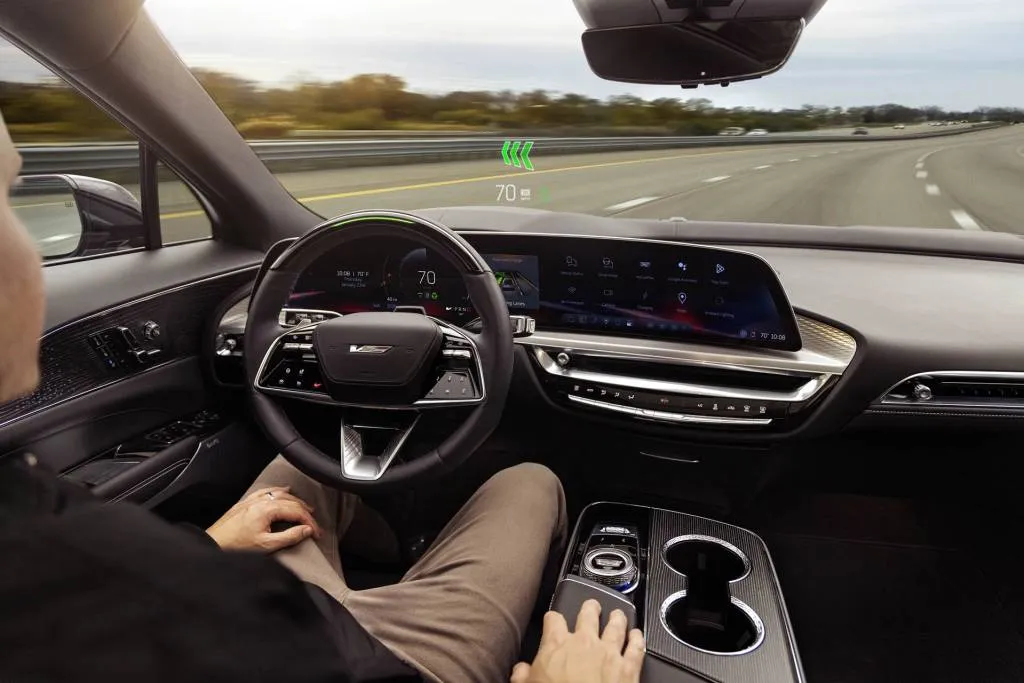
2026 Cadillac Lyriq-V
Subtle design updates include understated V-Series badging, revised front and rear fascias along with extended rocker panels. Buyers can opt for carbon fiber trim. Cadillac’s given the sportier Lyriq V-specific 22-inch wheels and a V-only Magnus Metal Frost color option.
Inside, the Lyriq’s 33.0-inch LED curved display screen and upscale dashboard remain, but V-specific graphics will splash across the screen. Augmented reality has been baked into the head-up display when using the navigation system. The automaker’s hands-free driver-assist system known as Super Cruise is standard as is a 23-speaker AKG Studio sound system with Dolby Atmos. Available nappa leather can be optioned on the V-specific front bucket seats with power-adjustable side bolsters.

2025 Volvo EX30 EV has arrived, $36,245 version due later
- U.S.-bound 2025 Volvo EX30 lineup includes Twin Motor Plus and Ultra
- That means starting price of $46,195, with 253-mile EPA range, claimed 3.4-second 0-60 mph
- Initial U.S. EX30s are China-made; Belgium-made examples, base $36,245 version coming later
Despite a delay of nearly a year, Volvo’s compact electric car, the 2025 EX30 has arrived at U.S. dealerships with its original feature set and pricing—if, that is, you’re seeking one of the more expensive dual-motor all-wheel-drive versions in the lineup.
At present, the 2025 Volvo EX30 lineup starts with the EX30 Plus Twin Motor Performance, at $46,195, including the $1,295 destination charge. Plus versions add Harman Kardon premium sound, a panoramic roof, and 19-inch wheels
What’s missing, as of yet, are the single-motor versions of the EX30—including the single-motor-only EX30 Core, which was set to serve as the base model for the U.S. lineup at just $36,245. Also missing are single-motor EX30 Plus versions, which otherwise adopted the same feature extras as above, without all-wheel drive, and were to cost $40,195.
Ultra versions get a new generation of Volvo’s Pilot Assist driver assistance, including assisted lane changes, a surround-view camera system, and parking assistance, and cost $47,895 with AWD. The Ultra had been set to cost $41,895 in single-motor form but that also remains missing from the lineup.
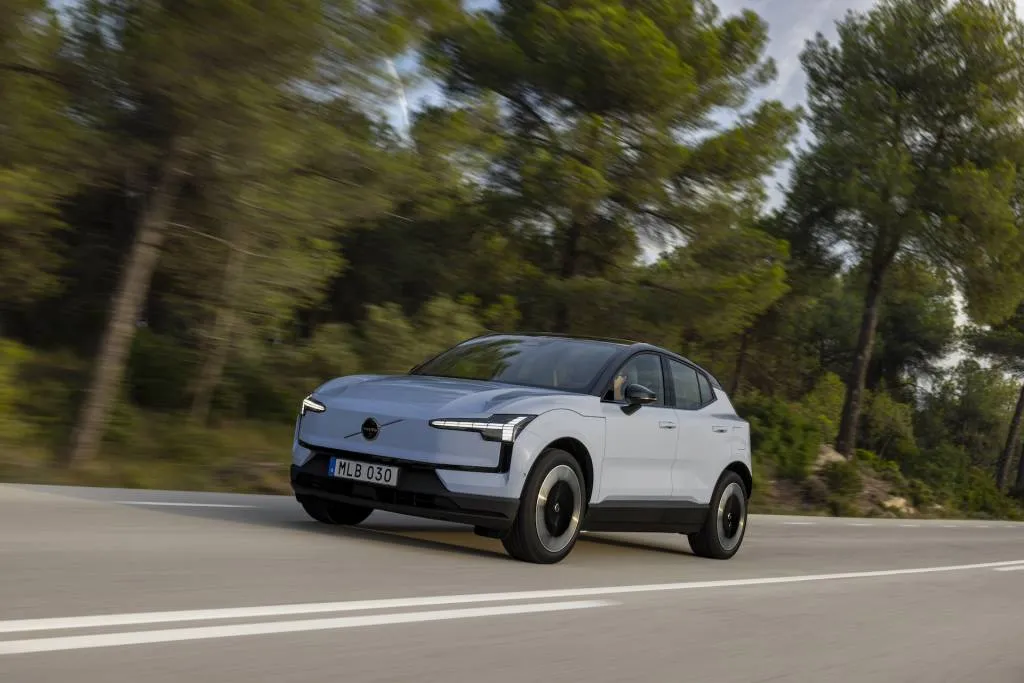
2025 Volvo EX30 electric SUV (single-motor, Cloud Blue)
That leaves just two versions at present for the U.S.—the Twin Motor Performance Plus, and the Twin Motor Performance Ultra, as Volvo terms them.
“It remains our ambition to introduce the EX30 Single Motor in the U.S.,” said U.S. media relations manager Russell Datz to Green Car Reports. “We will share more details on timing at a future date.”
U.S.-bound EX30 models were originally due to be sourced solely from China, but production will soon start in Ghent, Belgium. Volvo terms the initial deliveries of China-made EX30s happening now as being part of a limited run positioned to satisfy pre-order demand from enthusiasts, but it clarifies that future U.S. EX30s will come from the European plant.
“It is still our intention that most or all EX30s destined for the U.S. market will be built at our plant in Ghent, Belgium once production begins there,” said Datz.
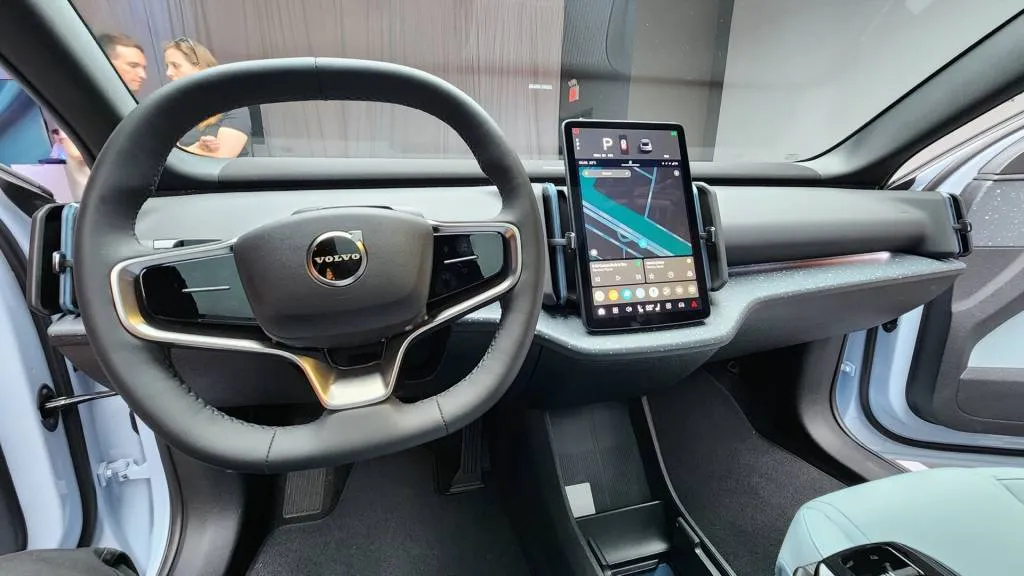
2025 Volvo EX30
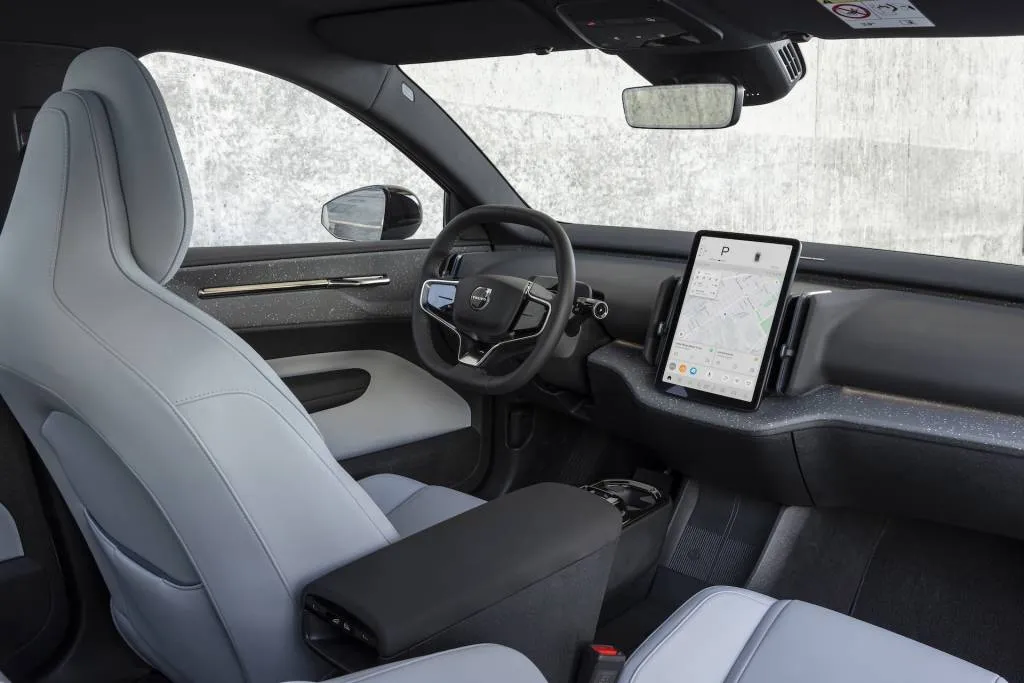
2025 Volvo EX30 electric SUV (single-motor, Cloud Blue)
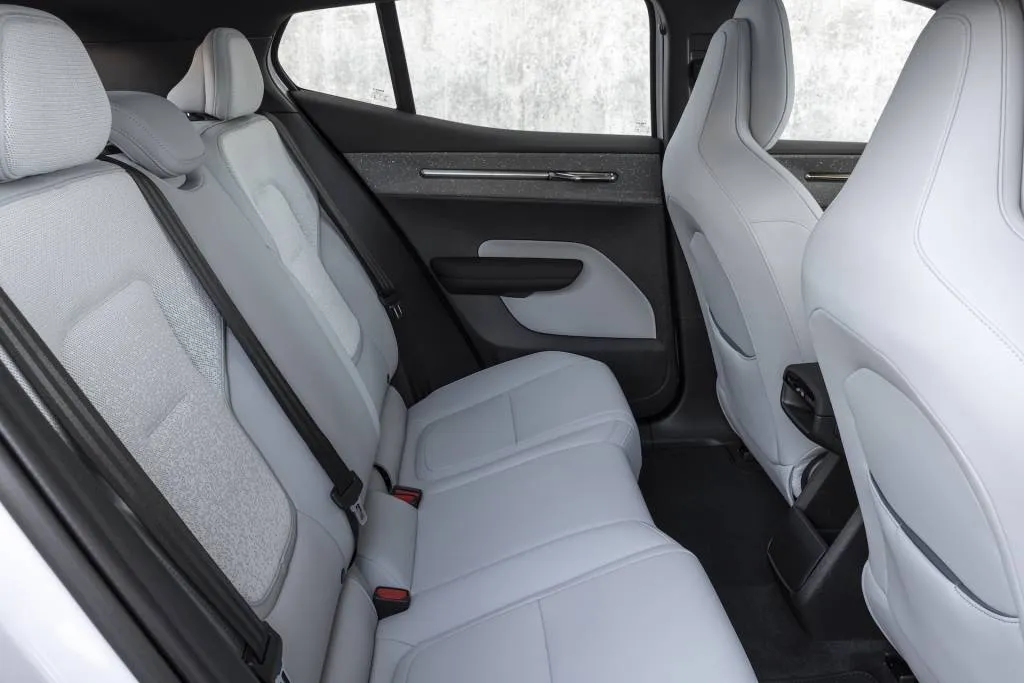
2025 Volvo EX30 electric SUV (single-motor, Cloud Blue)
All versions of the EX30 have a suite of advanced safety features including blind-spot monitors, and its interface is based around Google Built-In, meaning it revolves around native Google services like Maps—although wireless Apple CarPlay is supported.
In U.S. spec, the EX30 will be offered in a choice of Moss Yellow, Cloud Blue, Vapour Grey, Crystal White, or Onyx Black, with interior “expressions” including Mist Pine, Indigo, and Breeze. Volvo says that these are complemented with five ambient lighting themes.
That’s similar in price to a gasoline-engine equivalent, and Volvo achieves that parity without relying on the EV tax credit—which the EX30 likely doesn’t qualify for.
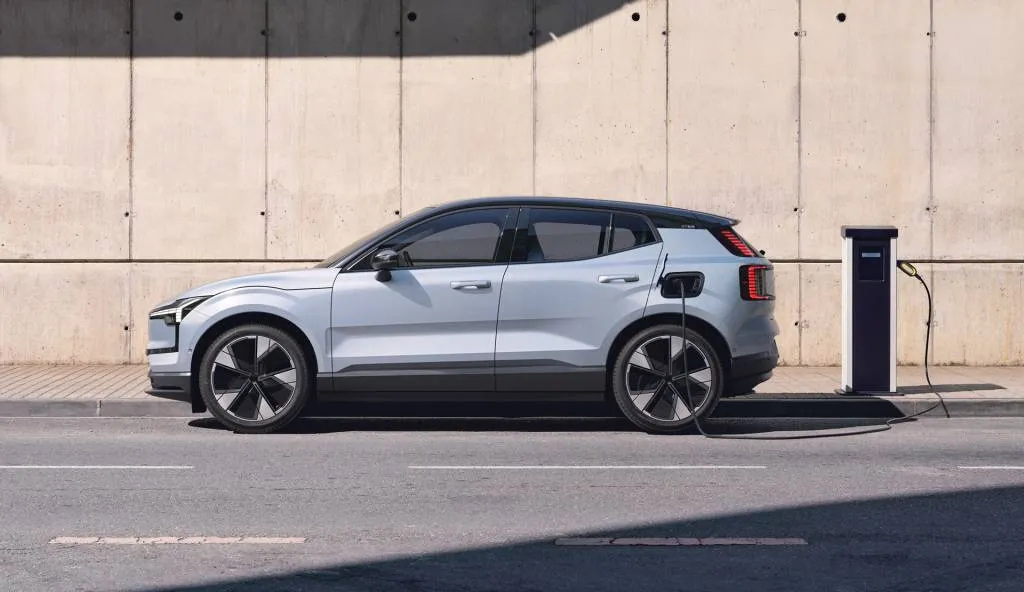
2025 Volvo EX30
Dual-motor versions of the 2025 EX30 have an EPA range rating of 253 miles. U.S. versions get a 69-kwh nickel manganese cobalt (NMC) battery pack that, in dual-motor versions will be able to charge from 10-80% in less than 30 minutes. It projected 275 miles under the EPA cycle for single-motor models.
Volvo won’t yet assign a U.S. arrival date or model year for those more affordable versions of the EX30, but it’s likely they’ll arrive later this calendar year. Whether that’s considered part of the 2025, 2026, or even 2027 model year, it remains to be seen.
The EX30 has the lowest CO2 footprint of any Volvo, the company says. Volvo flipped back and forth in calling the EX30 a car and an SUV, but in the U.S. it terms it an SUV. Volvo says the EX30 is up for weekend adventures, but it’s unclear whether it will offer some level of off-road capability or greater ground clearance than Volvo’s cars. It has said, however, that a more rugged Cross Country version is on the way.
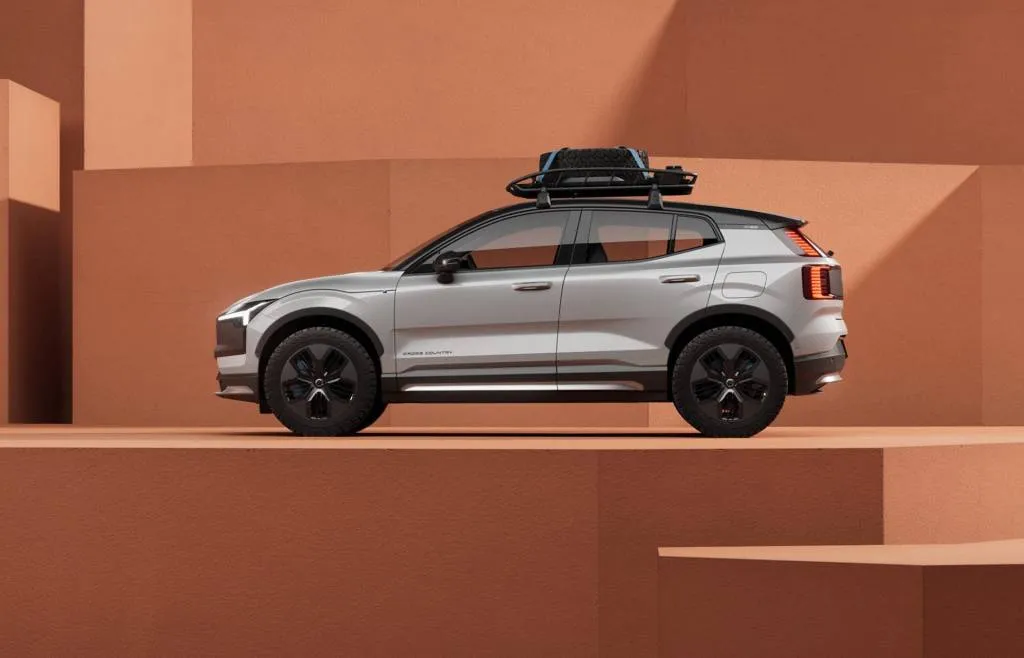
2025 Volvo EX30 Cross Country
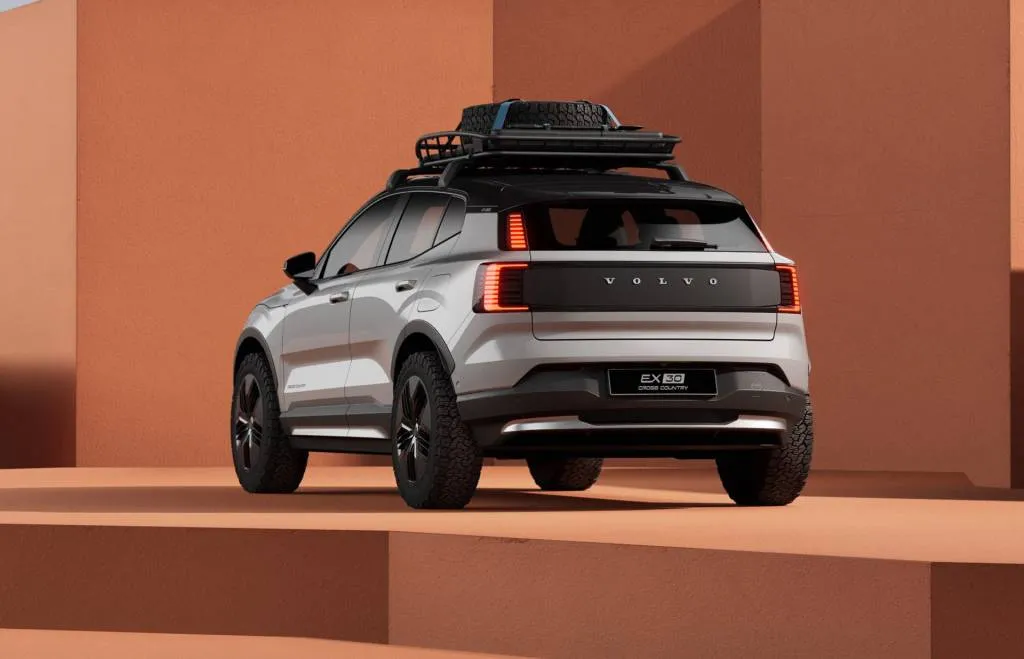
2025 Volvo EX30 Cross Country
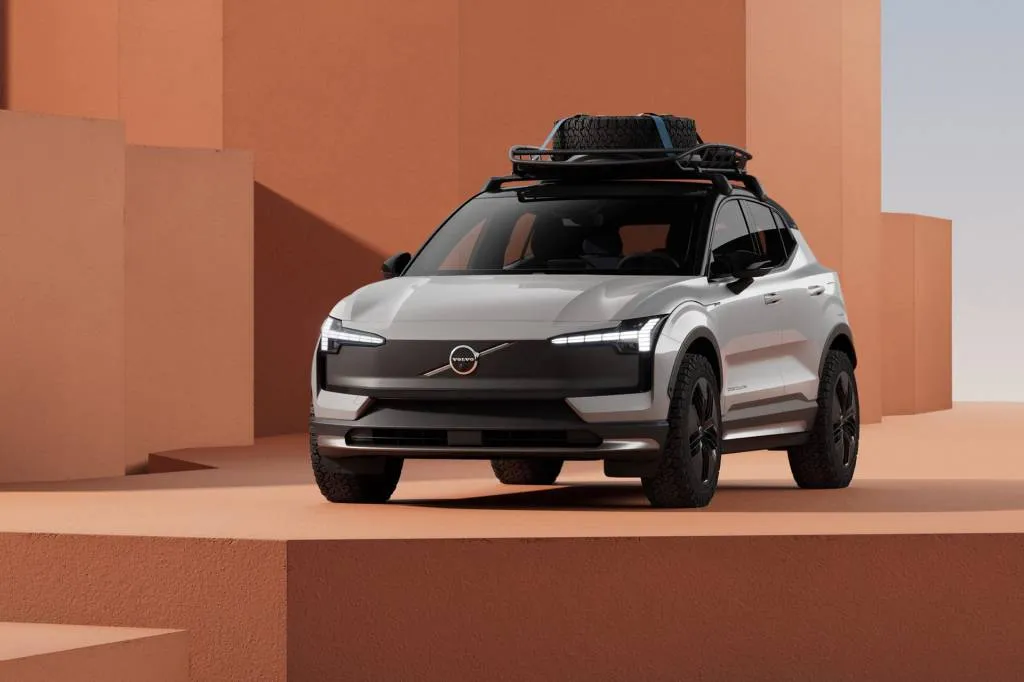
2025 Volvo EX30 Cross Country
Over the long term if Volvo can supply enough to avoid markups, that will position the EX30 as a viable alternative to the outgoing Chevy Bolt EV and Hyundai Kona Electric, as well as the Nissan Leaf Plus. It also undercuts the Kia Niro EV by a significant amount. At about 167 inches long, the EX30 is truly small-car-sized by American standards.
Volvo has for years suggested that it sees subscriptions as a means toward EV adoption, and the EX30 might be a great way to achieve that. Volvo announced back in 2021 that its U.S. EVs would be sold with no-haggle pricing and technically sold online only, although that strategy has yet to take form.

2025 Volvo EX40 costs $53,795, EC40 takes year off
- The EC40 hatchback skips 2025 model year
- The XC40 Recharge small electric crossover returns as the EX40
- Prices and specs mostly remain the same, with dual-motor versions costing only $1,750 more on the EX40
The renamed 2025 Volvo EX40 electric crossover is set to arrive at U.S. dealerships soon, but its coupe-like sibling skips this model year.
In a press release announcing its full-line 2025 model year pricing, Volvo confirmed that the EC40 would return to the U.S. as a 2026 model, leaving only the EX40 and its more conventional styling for now. The EC40 is distinguished from the EX40 by a lower roof and fastback-like rear end styling.
The EX40 and EC40 were previously the XC40 Recharge and C40 Recharge, respectively, but were renamed under a new scheme being applied across the lineup. Volvo is retiring the Recharge badge altogether, from both EVs and plug-in hybrids and giving EVs callout letters. EX denotes SUVs like the EX40, EC is used for electric coupes like the EC40 and the EM designation is for electric minivans—of which the Chinese-market EM90 is the only one so far.
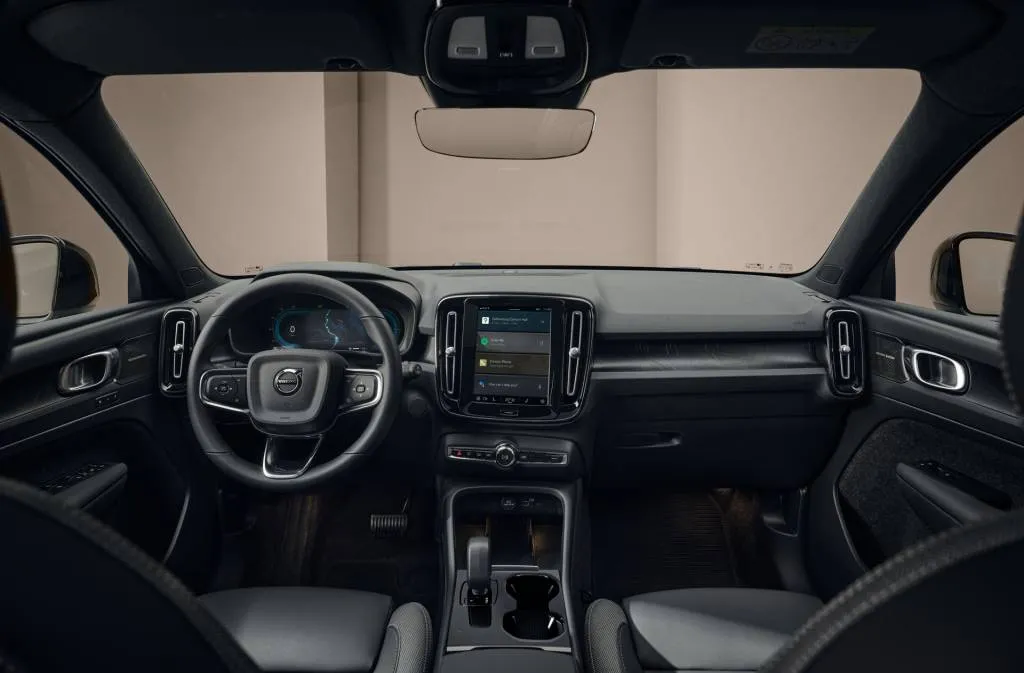
2025 Volvo EX40 (Europe spec)
These two compact models share the CMA architecture with the Polestar 2 and gasoline Volvo XC40, which continues for the 2025 model year with a standard mild-hybrid powertrain. Single-motor versions of the electric CMA models switched from front-wheel drive to rear-wheel drive for the 2024 model year (with dual-motor all-wheel drive remaining available throughout) and that continues for 2025.
As before, single-motor EX40 (nee XC40 Recharge) models produce 248 hp and 310 lb-ft of torque and have an 82-kwh battery pack. Dual-motor models up output to 402 hp and 494 lb-ft, but mandate a 78-kwh pack. Single-motor models return 296 miles of EPA range; dual-motor models are rated at 260 miles.
The only mechanical change to the EX40 for 2025 is an increase in DC fast-charging power from 200 kw to 205 kw. Volvo didn’t confirm whether the EX40 would be built with a NACS port as a 2025 model, but that is the plan for future Volvo EVs. Tesla Supercharger access for existing CCS-equipped cars, achieved via adapters, rolled out late last year.
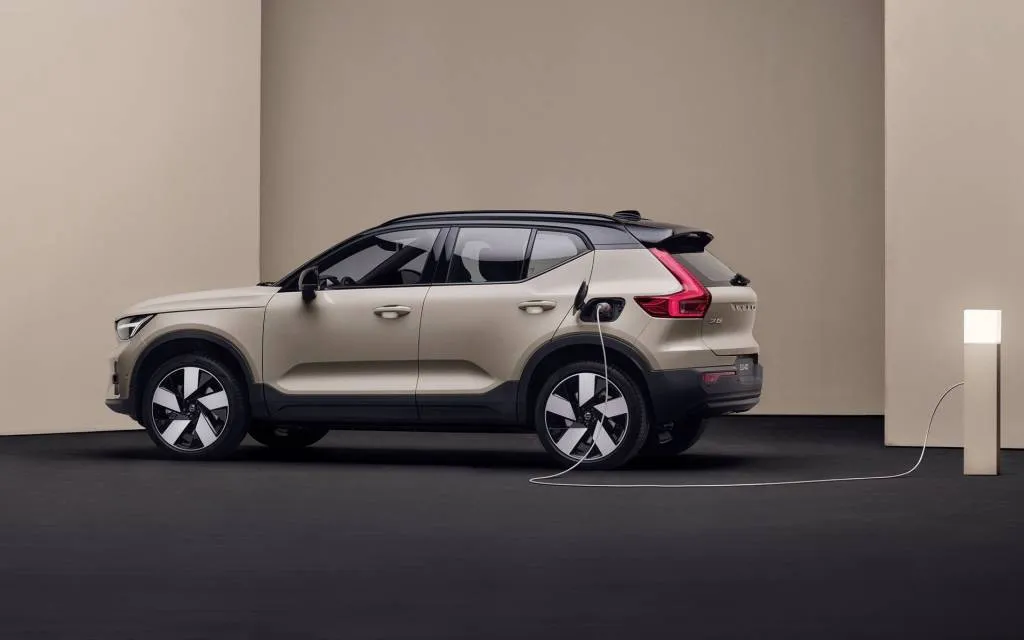
2025 Volvo EX40 (Europe spec)
EX40 pricing essentially holds steady at $53,795 for the base single-motor Core grade (all prices include a $1,295 destination charge). Plus and Ultra grades are available as well, costing $56,595 and $60,295, respectively. All-wheel drive is a $1,750 option on all three grades.
In the Volvo lineup, the EX40 is flanked by two new electric crossovers for 2025. The three-row EX90 is the brand’s new EV flagship while, following tariff-induced delays, the EX30 takes its place as the entry-level model. It slots below the EX40 with a $46,195 base price for the initial dual-motor configuration; a cheaper single-motor will arrive later in the calendar year.

Polestar 2 successor arriving end of decade
The Polestar 2 electric vehicle will get a direct successor that will appear toward the end of the decade, CEO Michael Lohscheller said in a recent interview with Autocar.
With last week’s announcement of the Polestar 7 small SUV, it’s easy to assume this model will effectively replace the Polestar 2 electric hatchback as the entry-level vehicle in the EV brand’s lineup. But Lohscheller said that won’t be the case, telling Autocar that Polestar will aim for a six-model lineup with the next-generation 2 and the new 7 sandwiching the Polestar 3 and 4 SUVs, the Polestar 5 fastback, and the Polestar 6 sports car.
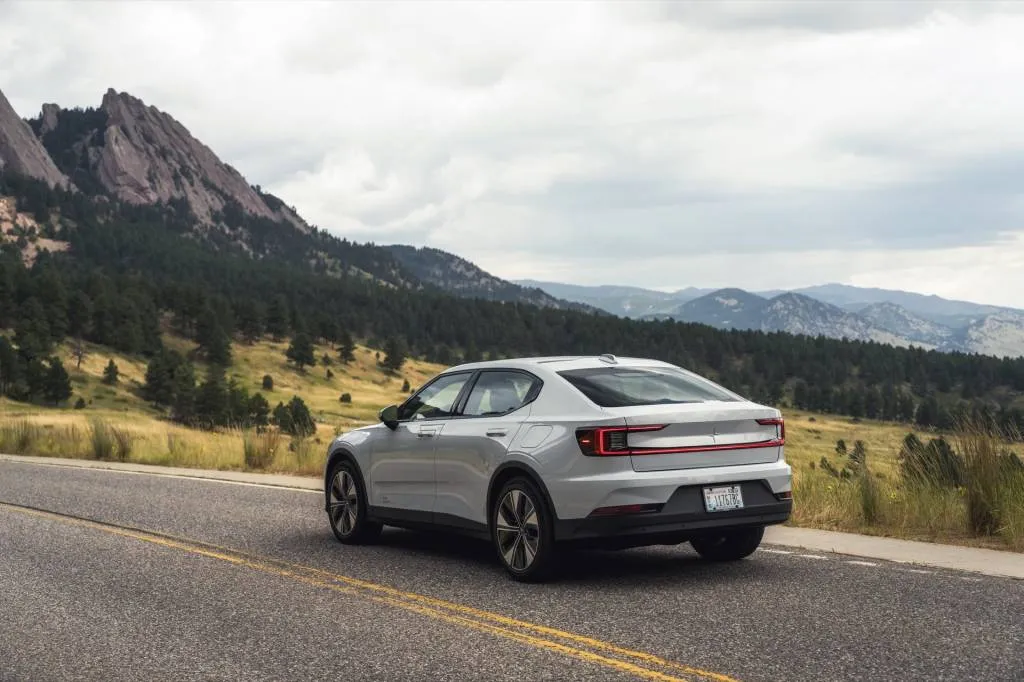
2024 Polestar 2 single motor
This aligns with what Green Car Reports was told about the fate of the current-generation Polestar 2, which was reduced to one configuration for the 2025 model year. That seemed like an indication the hatchback would be killed off soon, but Polestar said it remained committed to keeping it in the lineup. So perhaps the current-generation Polestar 2 will stick around long enough for the redesigned model to arrive.
That redesigned model will use a new architecture debuting with the Polestar 7 that will serve as the basis for all future Polestar models, and will arrive sometime after the 7, Lohscheller noted. Polestar hasn’t said exactly when that SUV will arrive.
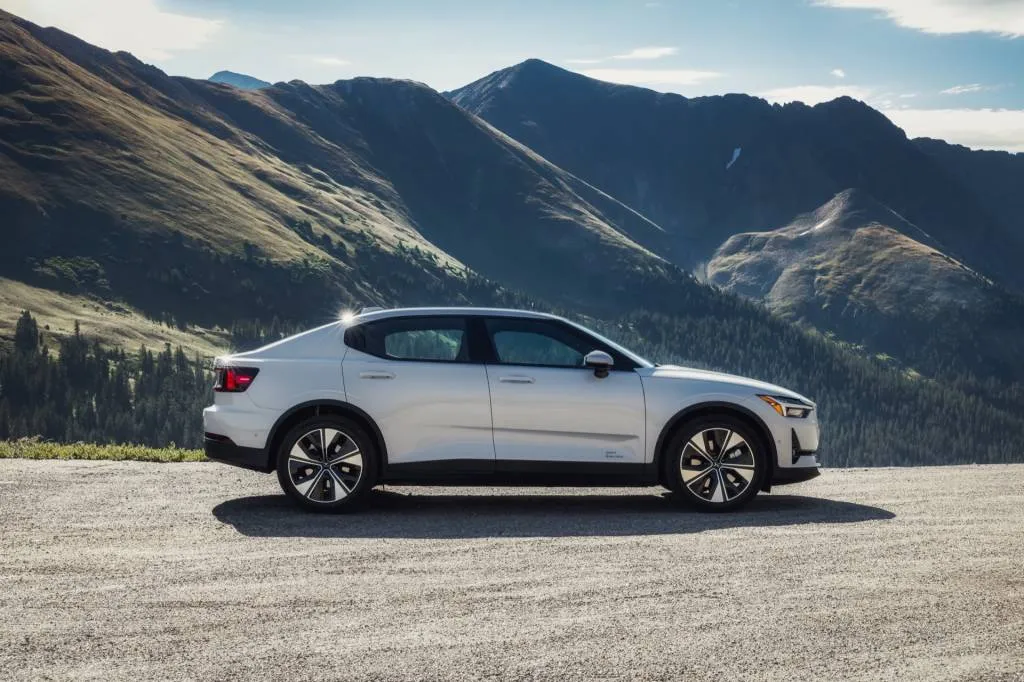
2024 Polestar 2 single motor
And while the current Polestar 2 is assembled in China, Autocar reports that the new version will be built in Europe, likely at parent company Geely’s new plant in Slovakia. That would also make U.S. importation easier should the Trump Administration follow through on its threat of even steeper tariffs than the ones already imposed by the Biden Administration on Chinese-made EVs.
While not confirmed for the U.S., a future Europe-built Polestar 2 would require less effort to sell here at a commercially-viable price than the Polestar 4. Polestar originally planned to build this model in China, but then shifted production for the North American market to a Renault plant in South Korea to get around U.S. trade policies that penalize China-manufactured EVs.

Mexico is pushing ahead with a federally subsidized EV
As the incoming Trump Administration remains committed to stiff tariffs on Mexican imports, the Mexican government is pushing ahead with its affordable electric-vehicle project.
The project,—called “Olinia,” meaning “movement” in the indigenous Nahuatl language—was announced last October, but President Claudia Sheinbaum provided the first details earlier this month.
As reported by the Financial Times, the goal is an “ultra-compact” electric car—designed and built in Mexico—with a base price between 90,000-150,000 pesos, or approximately $4,400 and $7,300 at current exchange rates.
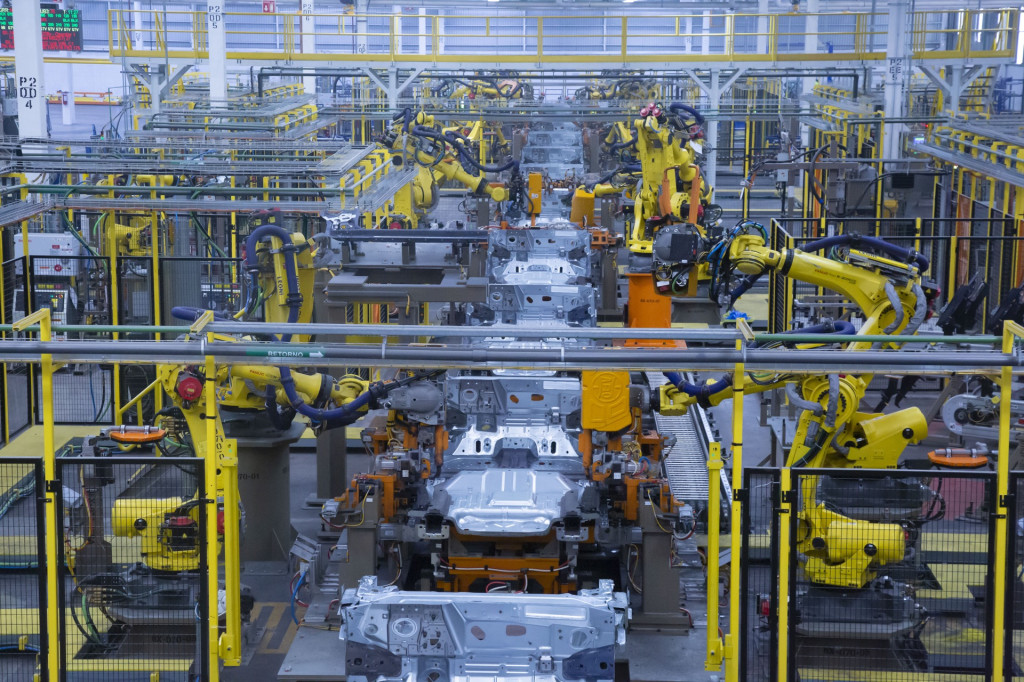
Ford Mustang Mach-E assembly – Mexico
This will be achieved with smallness and simplicity. According to the Financial Times, officials want the Olinia EV to be rechargeable using a conventional household socket rather than a dedicated charging station—more like an appliance than a car. That approach sidesteps the question of public charging infrastructure, which remains a problem for EV adoption Mexico just as it does in the U.S.
But instead of conventional EVs, its competition might instead be the small motorbikes frequently used for short trips or as taxis in working-class neighborhoods. In that sense, it’s a bit like an electric update of the Tata Nano, the ultra-cheap gasoline car designed for the Indian market as a safer, more comfortable alternative to two-wheeled vehicles.
The Olinia will likely also compete against entry-level EVs from both India and China. One in five vehicles sold in Mexico in 2023 was made in China, according to the Financial Times, reflecting that, while Mexico builds a substantial number of cars, most are exported. This project could produce a Mexico-made EV that more of the country’s citizens could afford, although given the modest budget of 25 million pesos (about $1.2 million), the likelihood of it being made in consequential volumes remains in doubt.
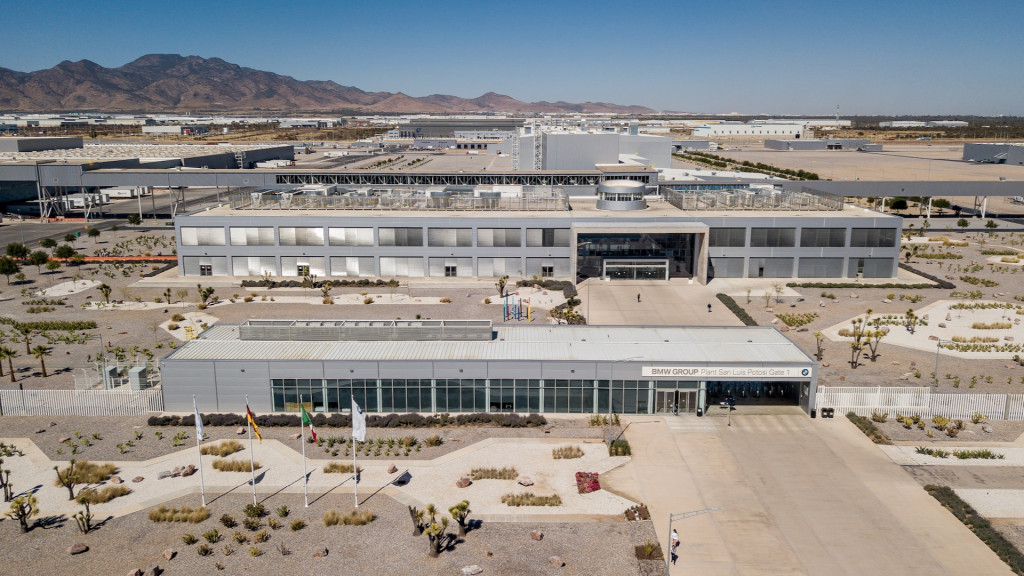
BMW Group Plant San Luis Potosí in Mexico
Meanwhile, President Trump is expected to put into action an aggressive tariff plan discussed during the 2024 presidential campaign. That included the promise of a 100% tariff on Mexico-built cars from Chinese brands—EV or not. He has also pledged to “punish” companies that ship jobs to Mexico or rely heavily on Mexico-based supplier factories. A wide range of analysts and industry experts have projected that such policies would raise new-car prices for U.S. consumers, but without the actual policy here yet it amounts to speculation.
In November, Ward’s Intelligence projected that tariff changes with Mexico would affect nearly 3 million vehicles annually, including some of the most affordable models reaching the U.S. market. With news reports suggesting a 25% tariff is what the administration might impose, Mexico is likely to lose some economic leverage—and needs to come up with more of its own plans to support manufacturing.

Canoo files bankruptcy, claiming funding shortfalls
Struggling electric vehicle startup Canoo has filed for bankruptcy and ceased all operations.
The startup announced its filing for Chapter 7 bankruptcy on Jan. 17 in the U.S. Bankruptcy Court for Delaware. This will result in the federal appointment of a trustee to oversee the liquidation of Canoo’s assets and distribution of proceeds to creditors, the startup confirmed in a press release.
Canoo attributed the decision to declare bankruptcy to unsuccessful efforts to secure additional funding from a Department of Energy loan program and foreign investors. Canoo went public four years ago, raising an estimated $600 million, but the cash-intensive process of developing and manufacturing new vehicles left it looking for other funding sources.
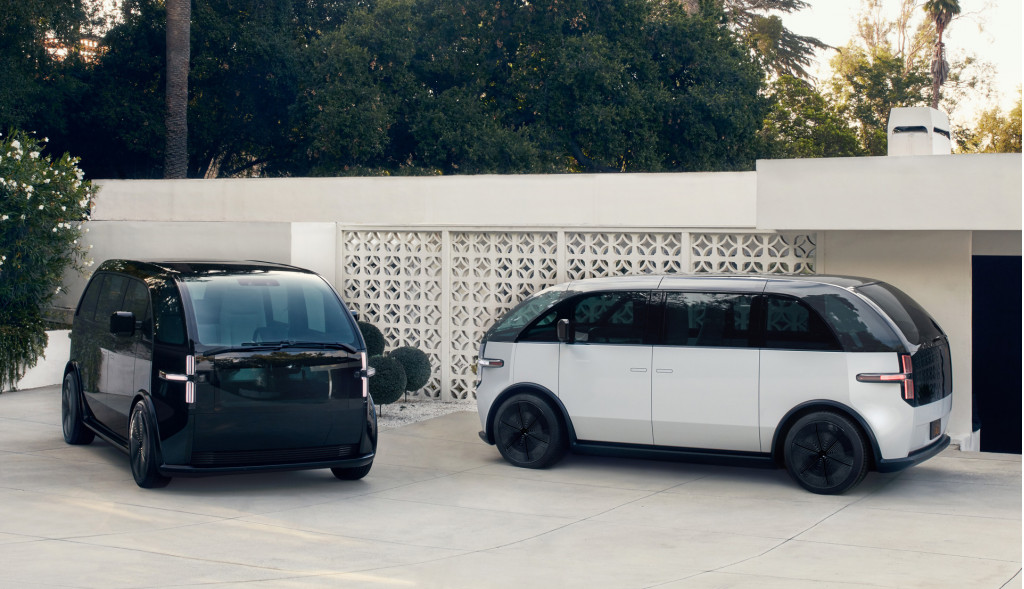
Canoo Lifestyle Vehicle
Canoo has claimed to have substantial numbers of orders from customers like Walmart, but has only managed to deliver small numbers of demonstration vehicles, including to NASA, the Department of Defense, and the U.S. Postal Service. It’s mainly focused on electric vans built atop a skateboard chassis, but it also produced two pickup-truck designs, the latter intended for military use and only produced in prototype form.
As first reported by TechCrunch, Canoo’s bankruptcy filing reveals the startup owes approximately $164 million to creditors while holding assets valued at $126 million.
Canoo in December furloughed 82 employees and idled an assembly facility in Oklahoma, then quickly placed the remaining employees on what it called a “mandatory unpaid break.” Earlier in the year, it purchased equipment from defunct U.K. startup Arrival for use at the Oklahoma facility.
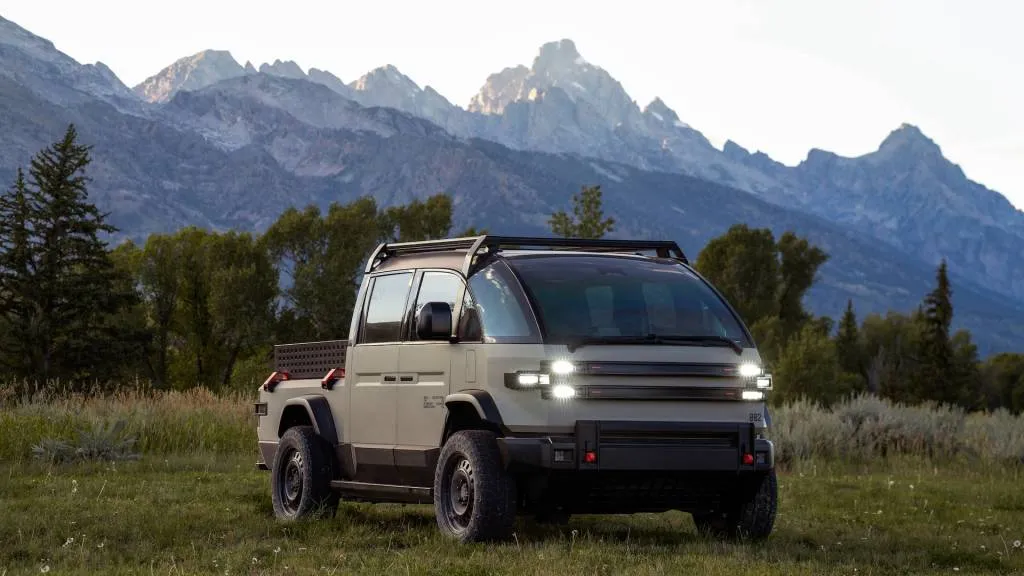
Canoo American Bulldog
In 2017, the company was started as Evelozcity by several former Faraday Future executives, although most of the contingent that launched it left some time ago. That’s coincided with a change in direction under current CEO Tony Aquila, who pivoted Canoo from its original plan of selling van-like EVs on a subscription basis toward commercial vehicles and government contracts.
While the broad-strokes plan to manufacture commercial vehicles has remained the same under Aquila’s leadership, the details have changed. Canoo revealed production plans with the Netherlands’ VDL, then canceled them, with a following corporate move to Arkansas and then Texas.

Michigan State Police put first EV into patrol fleet
The Michigan State Police (MSP) has acquired its first electric patrol vehicle, joining a growing number of police departments utilizing electric vehicles.
A 2024 Ford Mustang Mach-E modified for police use has been assigned to the MSP’s State Security Operations Section to be used by properties security officers at state-owned and leased facilities around Michigan’s capital of Lansing, according to a Jan. 13 press release.
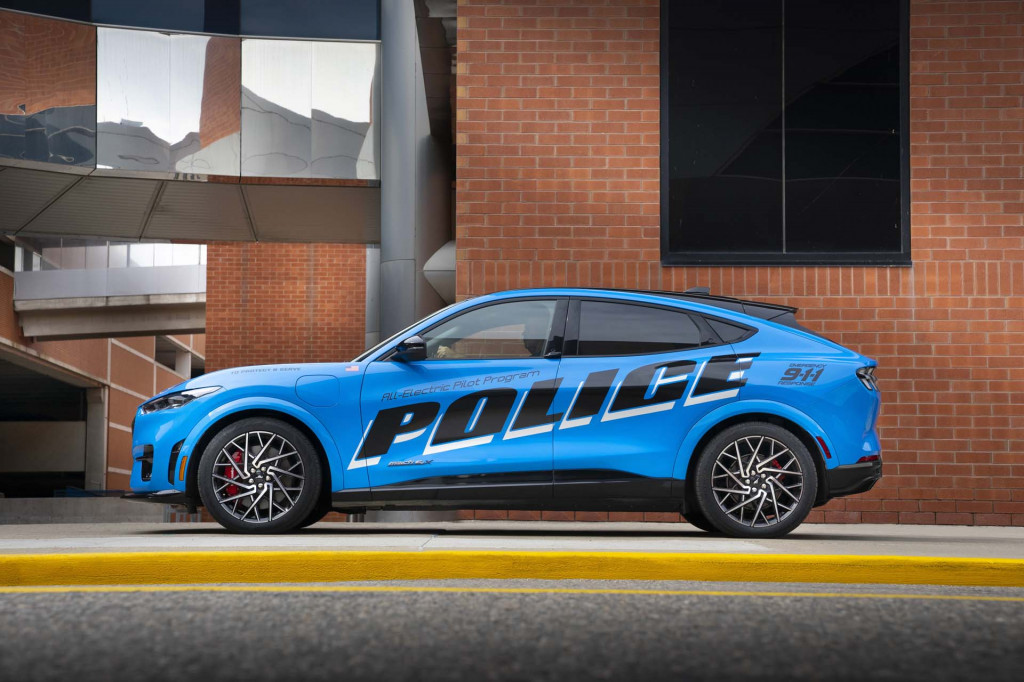
2021 Ford Mustang Mach-E police pilot vehicle
The Michigan State Police is known for conducting through testing of all new police vehicles, and has been testing EVs since 2022. But until now its only deviation from traditional internal-combustion has been with hybrid police cars.
Police departments in other parts of the country are ahead of Michigan in that regard. Ford has been pitching the Mustang Mach-E as a police car since 2021, and the New York Police Department (NYPD) has since acquired a few. Ford also offers a police version of the F-150 Lightning pickup truck, and has said it’s considering “purpose-built electric police vehicles” as well.
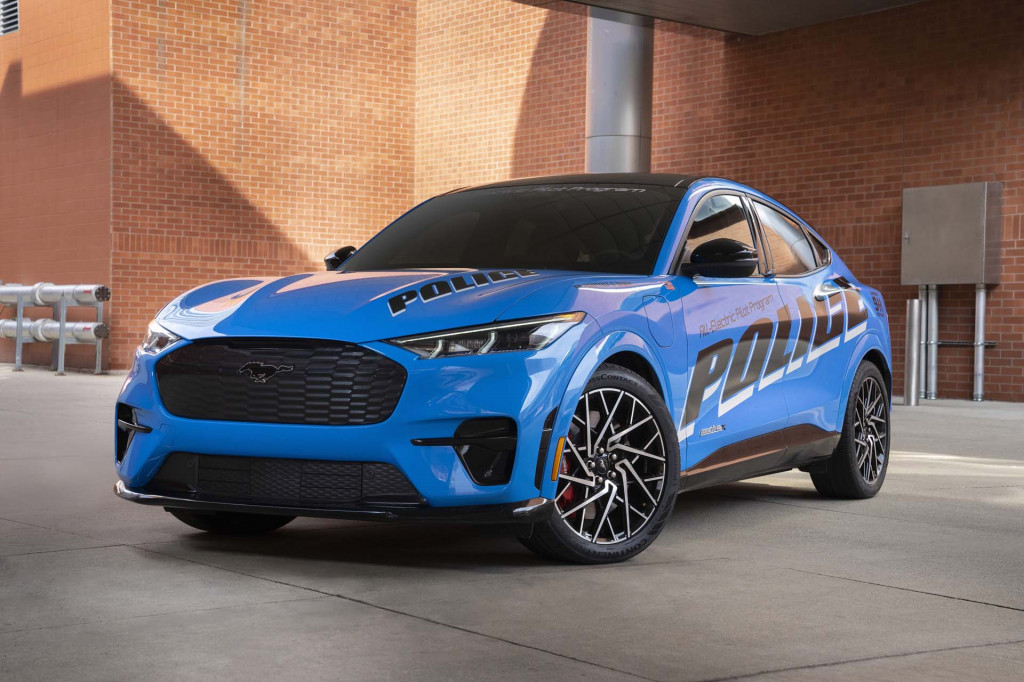
2021 Ford Mustang Mach-E police pilot vehicle
Given the state’s leadership in EV sales for civilians, several California police departments operate electric cars—with at least one municipality boasting an all-electric fleet. These tend to be Tesla Model 3 and Model Y crossovers modified by aftermarket companies, which some police departments have said are less than ideal for the job.
Police departments still don’t have many other choices for electric cars, though. It’s unclear whether the Tesla Cybertruck will prove more suitable for police work than the automaker’s smaller vehicles. But Stellantis has teased a possible police version of the all-electric Dodge Charger Daytona, which could make for a more reasonable replacement for previous-generation gasoline Charger sedans as they cycle out of service.

2025 BMW i7 electric flagship sedan carries over unchanged
The 2025 BMW i7—an all-electric version of the automaker’s flagship 7-Series—carries over to the new model year unchanged.
Listed pricing even remains the same, although an increase of the mandatory destination charge from $995 to $1,175 somewhat bumps up the effective cost of an i7. The three-tier lineup still starts with the single-motor rear-wheel-drive i7 eDrive50, which now costs $106,875 with the higher destination charge.
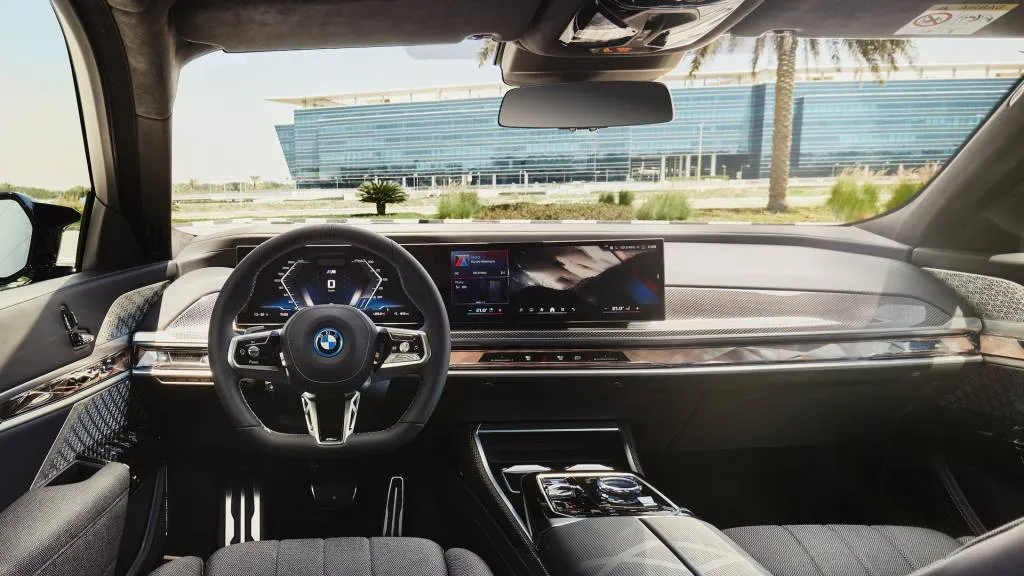
2025 BMW i7
The dual-motor all-wheel-drive i7 xDrive60 increases output from the rear-wheel-drive model’s 449 hp to 536 hp at a cost of $125,375. This is the version we initially drove when the i7 launched as a 2023 model, and we found it shockingly good considering that it shares so much with gasoline 7-Series sedans.
For 2024, BMW added a sportier dual-motor i7 M70 with 650 hp, which the automaker claims will get this version of the i7 from 0-60 mph in 3.5 seconds. It returns for 2025 with a $169,675 sticker price, once destination is factored in.
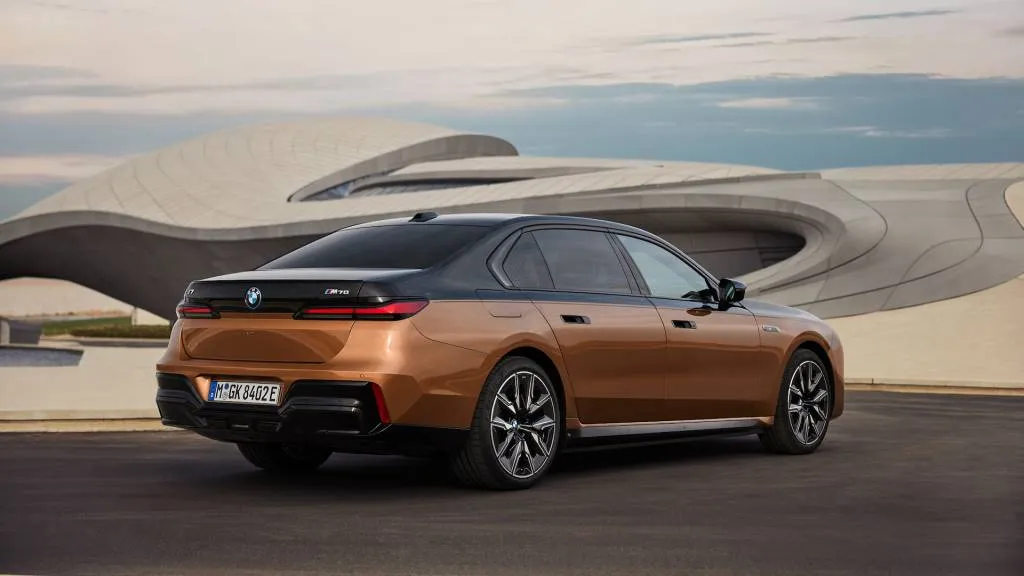
2025 BMW i7
All i7 models use a 101.7-kwh battery pack that delivers a maximum 314 miles of EPA range in eDrive50 models with 19-inch wheels (the smallest available). The xDrive60 and M70 max out at 311 miles and 285 miles, respectively. Again, that’s dependent on wheel choice. The i7 has an 11-kw onboard charger and can DC fast-charge at up to 195 kw—allowing it to gain 80 miles of range in 10 minutes, according to BMW.
The i7 represents one of multiple course corrections BMW has made with its EV plans. After relatively slow sales of the i3 hatchback, BMW refocused on EVs based on combustion models, yielding the i7 and other current models like the i4 and i5. But BMW is returning to dedicated EVs with its Neue Klasse models, the first of which is now in pre-production, for the European market, ahead of a planned launch there later this year.

Supplier SK On claims solid-state EV battery “breakthroughs”
Battery supplier SK On recently gave an update on its research into solid-state batteries for electric vehicles, claiming “breakthroughs” that could bring these batteries closer to production-readiness.
In a press release, SK On said it’s developing two types of solid-state batteries: one with a sulfide-based electrolyte, and one with an oxide-based electrolyte, with “commercial prototypes” expected by 2027 and 2029, respectively. The company aims to complete a solid-state battery pilot plant at its research center in Daejeon, South Korea, later this year.
This timeline will be made possible in part by the aforementioned breakthroughs, which SK On claims will allow a longer life cycle for solid-state batteries in the near future. They come from separate studies into methods for improving the robustness of both solid-state chemistries it plans to commercialize.
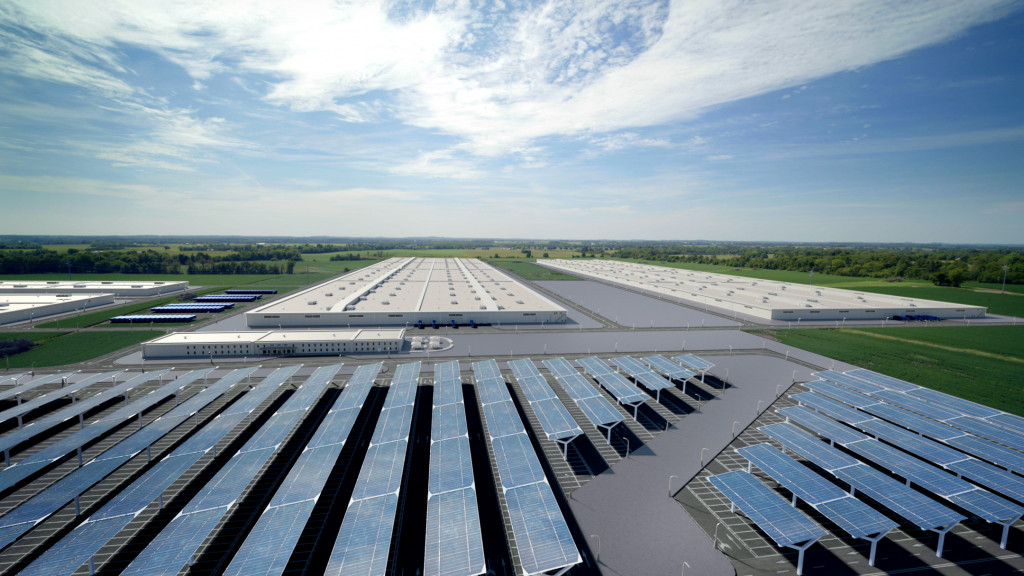
BlueOvalSK Battery Park – rendering, September 2021
In one study, SK On claims to have gotten encouraging results from photonic sintering of oxide-based electrolyte materials, a process the company says could address the brittleness of material produced using current methods, while potentially reducing costs. Testing was done with a hybrid solid-state battery cell that used a gel electrolyte, but SK On appears to believe that the results extend to all-solid-state batteries as well.
Researchers also tested lithium- and manganese-rich layered oxide (LMRO) cathodes for sulfide-based solid-state batteries. With a special coating applied to prevent oxidization of the sulfide electrolyte, SK On claims to have reached a satisfactory life cycle for these cells.
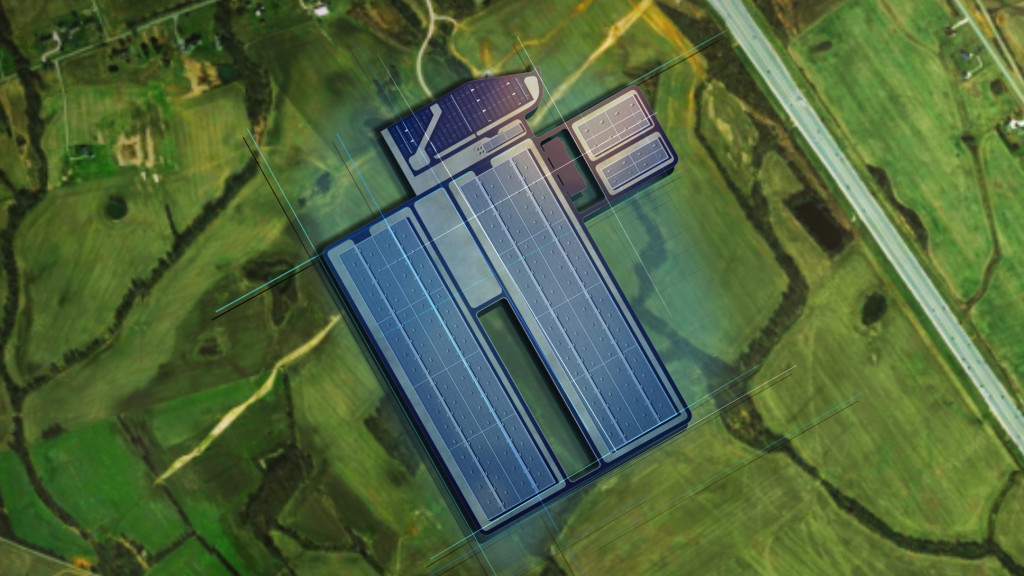
BlueOvalSK Battery Park – rendering, September 2021
It’s not unusual for startups to hype their achievements in the name of survival, but SK On is a large, established battery manufacturer that’s generally more conservative. So a declaration of breakthroughs from this company—which has automotive customers like Ford, Ferrari, and Hyundai—is a big deal.
The race to develop commercially-viable solid-state batteries has attracted a field of competitors ranging from startups and established firms like SK On to automakers themselves. Both Honda and Toyota are planning to produce solid-state batteries in-house, albeit likely on a small scale, by the end of the decade. Other automakers, such as Stellantis and Volkswagen, are allying with startups for access to the tech.
